This could be a significant move for Zuck and Co.
* This article was originally published here
Make Money Online Fast Discover proven ways to make money online quickly with affiliate marketing, legit side hustles, digital courses, and expert tips. Learn how to start earning today — no experience needed. Explore honest reviews of top programs, essential tools, and high-converting strategies to build income from home or anywhere in the world. Perfect for beginners, side hustlers, freelancers, and anyone ready to create real financial freedom.
Introduction Want to make money online fast? Whether you need extra cash or want to build a full-time income, the internet offers endless ...
This could be a significant move for Zuck and Co.
Whatever it is you do, it is almost certain that there are other companies out there offering a similar product or service to yours.
In any crowded marketplace, you need as much information and insight as possible to gain an edge over your competitors.
Simply knowing what they offer is not enough.
With the advent of new software and technology, marketers and business owners have the ability to know more about their competition than ever before.
It is extremely important to regularly conduct a thorough competitive analysis in order to stay one step ahead.
Competitive research (or competitive intelligence) is a field of strategic research that specializes in the collection and analysis of information about rival firms.
It's an essential tactic for finding out what your competitors are doing and what kind of threat they present to the success of your company.
According to data from Crayon, a research firm based in Boston, 41% of business professionals "strongly agree" that competitive intelligence is critical to their company's success.
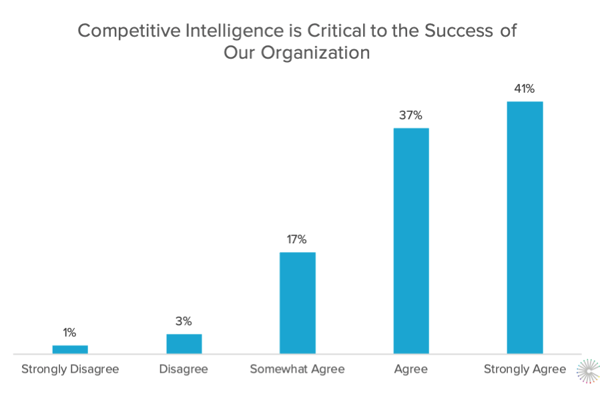 Source: Crayon
Source: Crayon
But at the same time, a majority say they struggle to gather the right information and insights.
Competitive research is really just collecting bits of information available in the public domain, from financial filings to reports compiled by companies like Hoovers and Dun & Bradstreet.
(You can also find articles written about companies in local newspapers or on Nexus files. Online databases are available from sources such as the U.S. Securities and Exchange Commission and Standard & Poor’s, and news sources such as PR Newswire.)
Of course, you can also use search engines to find information about companies.
While an in-depth analysis is certainly going to yield the most insight, a good deal of information can be obtained just from your own desk. Here's how.
This seems obvious, but it’s an essential first step. Do you know who your top competitors are?
If you sell a product or service online, you are likely competing with dozens, even hundreds of companies going after the same group of qualified leads.
Whether you are a local, national, or international company, there is probably someone in your company, often in the sales or marketing teams, who can quickly rattle off your top competitors — as well as what differentiates them from you.
If you need a little help identifying your competitors, Google is a helpful resource. By simply searching the type of service or product you are offering, it is pretty likely a few of your top competitors will show up.
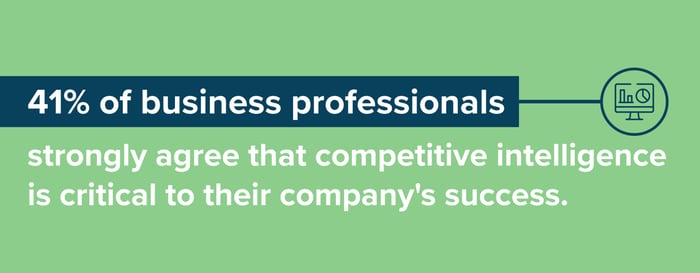
Another great way to discover who your top competitors are is by using online tools such as Semrush.
Semrush is a great software to get a look into which other companies are ranking for your keywords, and how you stack up against them. (You can start with a 30-day free trial.
Depending on your business, you could also use review sites like Yelp, Angi, or Trustpilot
Once you've identified your competitors, you can kick-start your competitive analysis and dig a little deeper to gain a better understanding of what type of content they're publishing.
Analyzing their content can help you determine what opportunities for your messaging? What types of content creation do your competitors focus on? Blogs? Case studies? Premium content?
Are there newsletters, YouTube channels, or podcasts?
Once you've located their content, you can determine the quality, and you can see how it compares to yours.
Be sure that you look for how frequently they are publishing, adding, and updating new content — as well as what topics are they covering.
At the bottom line, are they doing anything that you aren't?
If your competitors are consistently publishing case studies, this could be a part of the reason why your quality leads are going to your competitors. A prospective client wants to know what it's like to work with your company.
Next, take a closer look at their website.
If your competitors tend to publish articles three times a week compared to your one article every two weeks, it will be beneficial for your company to start building a content library that drives more traffic to your site. Start publishing more frequently about relevant topics — and organize your content into a learning center.
However, don't just blog because you want to add more content; it won't generate more traffic if the content you're adding isn't remarkable.
Say your competitors have the same type of content, update it just as frequently, and produce high-quality work. You might have to look more closely to find what they are doing differently.
It might be their SEO.
If your company has a blog, you know how important your SEO is. While conducting a competitive analysis on the type of content your competitors are generating, it is also beneficial to consider that content's SEO.
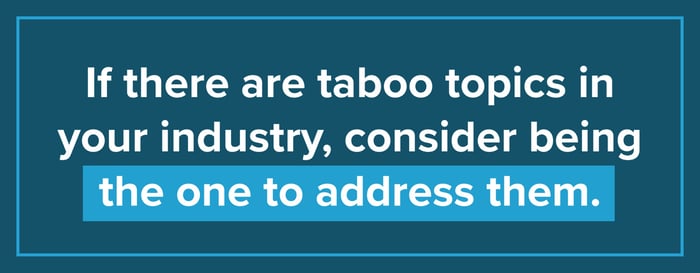
Look for gaps that you can go after. Be willing to talk about things that our competitors aren't.
If there are taboo topics in your industry, consider being the one to address them. For example, in some fields it's uncommon for companies to openly address price and cost. If you're willing to, you can become the established voice of trust in your field.
As you look at keyword rankings, look for opportunities.
If a top result for tennis rackets is a few years old, try to outrank it with one that’s more up to date.
Does their list of top insurance providers leave out a big one? Does it fail to include a featured snippet? Are any links broken?
When you look closely at the work of your competitors, you should be able to identify gaps and shortcomings. Use the creativity and expertise of your team to fill in those gaps.
A company's presence on social media is becoming increasingly important, and each company is utilizing each platform differently. Social media networks are a great way for companies to interact with users and fans.
Additionally, businesses use these sites to distribute content and get discovered.
The next step of your competitive analysis should be to determine how your competitors are using social media and integrating it into their marketing.
Not only is it important to see if your competitors can be found on social media platforms, but you also want to see how effectively they're using their profiles.
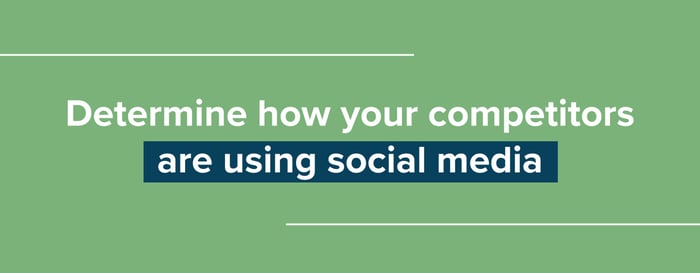
What type of information are they posting? What is their frequency?
Next, check out engagement.
These are all questions you should be asking yourself when you are checking your competitors’ profiles. Remember, just because they have a profile does not necessarily mean they are winning with social.
Don't just click off the page quickly; learn what they are doing. See what can you do better?
This one's a bit harder, but that just means you'll have to do some digging. Find the information you can so you're able to piece together the full picture.
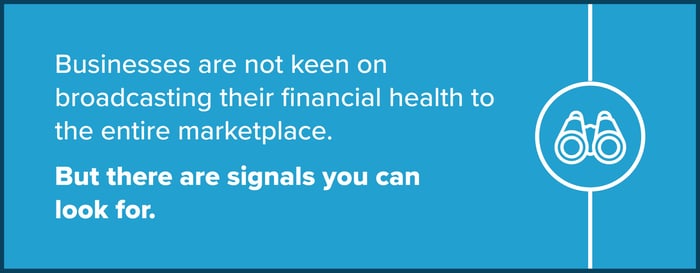
Businesses are not keen on broadcasting their financial health to the entire marketplace.
But there are signals you can look for.
None of these will give you a full picture of a company's health, but they give you an idea.
After performing a competitive analysis, you now have a better idea and understanding of what your competitors are doing.
Take all the information you gathered about each competitor and identify particular areas of your own work that can be improved. If you’re looking closely enough, you’re bound to find something.
You be able to identify key areas that you can improve upon — especially in regard to your messaging with potential customers, blog readers/subscribers, and social media users.
According to research done by Crayon, marketplaces are becoming increasingly crowded and competitive:
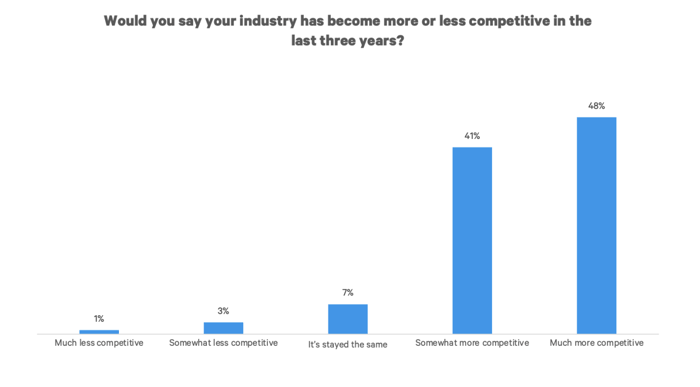
In this landscape, the information already provided to you by your competitors, by way of their websites, their social media profiles, and their content — in conjunction with third-party review sites and other resources — can provide you with much of what you need to position yourself strategically.
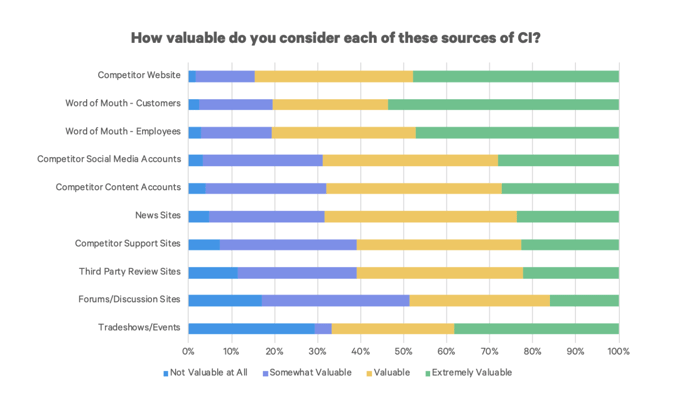
(Images sourced from Crayon)
Increasingly, companies see their close knowledge of their competitors as key to their own success.
If you want to position yourself to stand out from the competition, start with the research that’s already close at hand. Then, plan how you and your colleagues can go above and beyond to make sure your firm stands out, ranks highly, and is seen as a first choice, whatever field you occupy.
When I started IMPACT in 2009, it was just me, working out of my condo.
At first, it was just a side hustle: I was building websites for local businesses. It was months before I was ready to quit my day job and hire an employee.
Today, IMPACT employs more than 60 people, and we service clients around the world.
I’m not sharing this to pat myself on the back for hustling and growing my small business. I’m not trying to show everyone that I’m unique. Actually, it’s for the opposite reason.
My story is the same story that so many business owners know to be true: As we grow, the work we do today is completely removed from what we did when we were getting started.
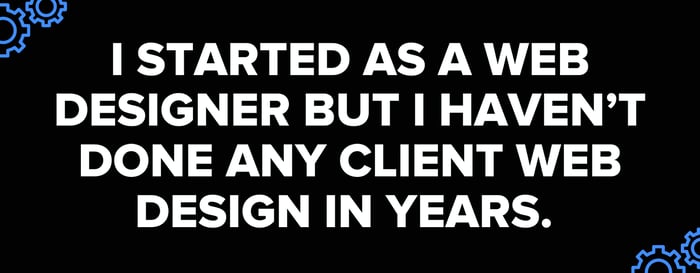
I started as a web designer but I haven’t done any client web design in years.
This is often the way it is. You start a business because you have a skill or a focus, but you eventually hire your own replacement as you grow and the company needs different things from you.
Instead of a frontline worker, you become a manager (then, in many cases, you become a manager of managers). Maybe you become a course-setter, too.
Anyone who’s had this experience knows how different it feels.
A new role requires new skills. There’s no other way of saying it. If you were hiring a developer or you were hiring a CEO, you’d look for different resumes.
So, the big question is: How do you learn those new things? How does a developer become a CEO?

I didn’t go to CEO school or take time to get an MBA in executive leadership.
For me, those lessons came from my bookshelf, from my day-to-day experiences (that is, the hard way), and most importantly, from coaches.
Many of the most respected business leaders use coaches to get ahead, and I wanted that same competitive advantage.
As we’ve grown in size and had more resources at our disposal, we’ve invested more and more heavily in coaching — for our leadership team and for our whole company.
This is for a simple reason: I’ve found coaching to be the surest, fastest path to reflection, growth, and mastery.
When the company started expanding, I knew there was a bunch I didn't know yet. I was drawn to EOS, or Entrepreneurial Operating System. I had read Traction by Gino Wickman. The book really spoke to me. It offered me a path forward to becoming a purpose-based leader.
For our growing business, this framework helped us focus on culture, routine, and processes to give us a clearer structure and goals, which were just what we needed to mature.
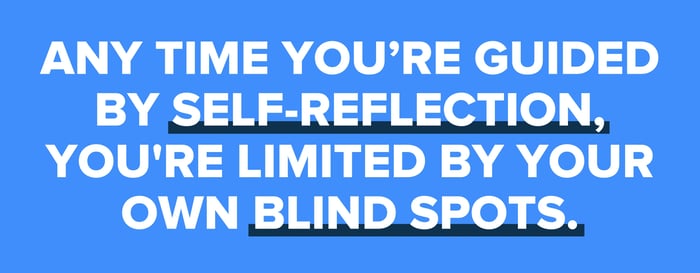
We used EOS extensively. Still, I knew I wasn’t getting all I could out of the EOS framework because we were doing it on our own.
Any time you’re guided by self-reflection, you're limited by your own blindspots. That’s a truth you can’t get around.
There’s a reason the best athletes in the world hire multiple coaches, trainers, nutritionists, and more. Those experts can see things that the athletes can’t see themselves. They can provide discipline, organization, and accountability in a way that is otherwise impossible.
At the time, we couldn’t afford to hire an EOS coach, so we went without. As a result, our outcomes were not what they could have been.
We grew more slowly. We made more missteps. We had less productive conversations.
Now, years later, I keep that in mind. Granted, we have more capital at our disposal, so we choose to invest some of it to work with coaches.
When I read Scaling Up by Verne Harnish, I knew how big an effect this business model could have at IMPACT. I also knew, from my EOS experience, that we’d get the most out of it if we hired experts to guide us through it.
So we did.
Next, it was Donald Miller’s Building a StoryBrand. The same thing happened: We hired a StoryBrand guide to lead us through the framework. Even though we do web design for our clients, we found that we were just too close to our own company to create a clear marketing message.
With outside guidance our conversations were richer, our outcomes were greater, and our progress was faster.
If you can think back to when you were a student, what did it feel like when the teacher lectured to the class? I tended to zone out. Why? Because the learning wasn't interactive at all. It was passive.
Don't get me wrong, you can get a lot out of a lecture or a video. But the real magic happens when you work directly with an expert.
I can read a book about golf and watch a dozen YouTube tutorials, but I'm going to get a heck of a lot better when someone actually watches my swing and offers feedback.
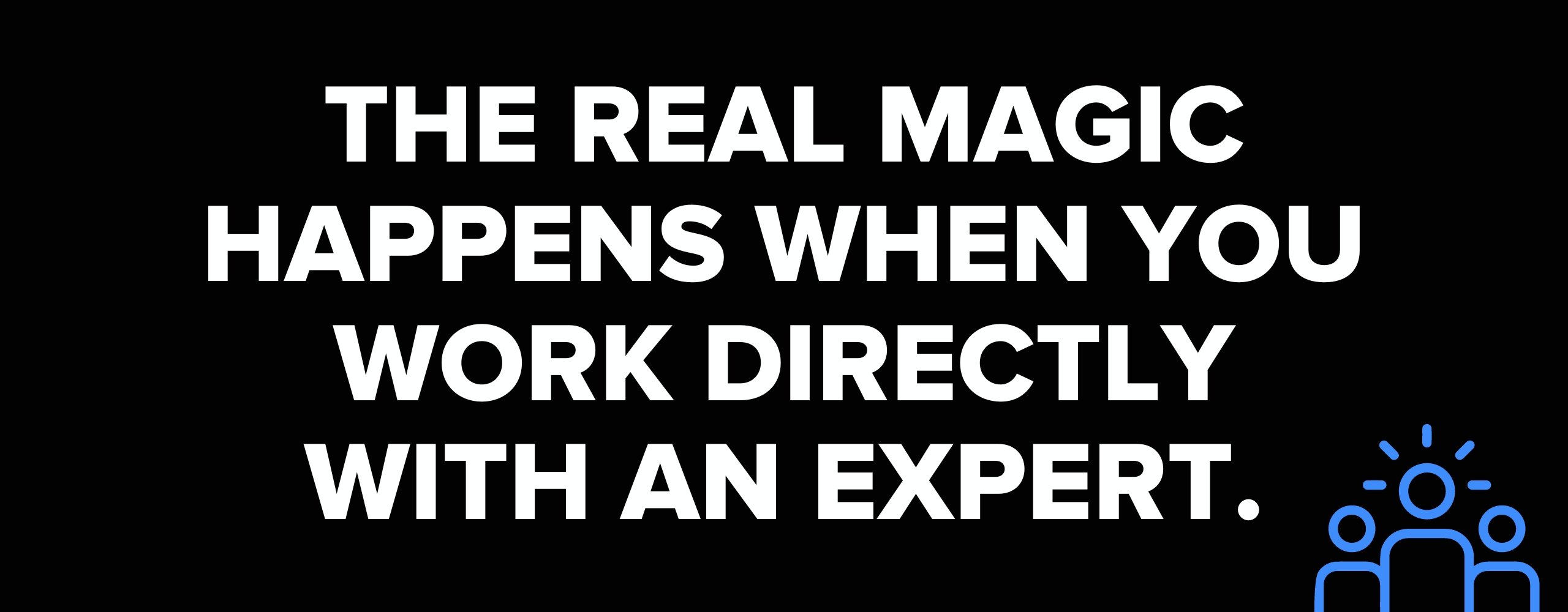
Watching videos is passive. Coaching is interactive.
The expert is evaluating your progress and spurring your growth.
For learning to stick, for growth to happen, it has to be active — and interactive.
When you think about it, all education is aimed toward independence. Whether you’re taking a business class in college or you're apprenticing to an expert, you're learning so that you can eventually do it on your own.
As IMPACT grew and became an agency, we became frustrated with the way most clients were treated by agencies. In almost all cases, education was absent. Agencies were not teaching clients to update their own website, write their own content, gather their own data, or schedule their own emails.
Instead, the client was dependent on the agency for success.
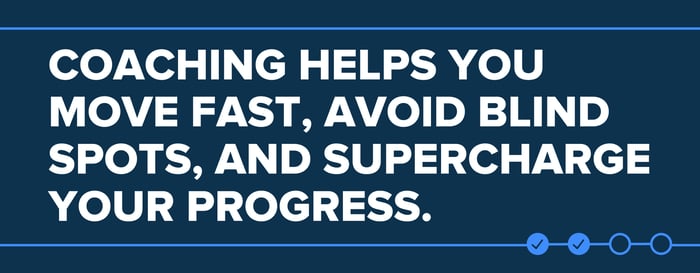
We imagined a different model, one that went beyond the too-common "hire and agency and wait" approach:
Our coaching programs are designed to empower excellence — from leadership coaching to tactical training in marketing, sales, HubSpot, video production, and more.
That's a future to believe in.
Coaching helps you move fast, avoid blind spots, and supercharge your progress.
When you’re serious about growth, a coach can show you how to get there.
Up your Google Search skills with these advanced special commands called operators.
Many companies looking to build awareness, drive demand, and generate new business, hire a marketing agency thinking it’s the fastest road to the promised land.
They shake hands, sign the check, perhaps share some passwords, then wait for the results to roll in. But, as many eventually learn, this road can be much longer and bumpier than they expected, or even a dead end.
Perhaps traffic and leads end up staying low, or maybe they can't get content or campaigns out the door on a regular basis.
We know all about this first-hand. We used to be a marketing agency, and even though we were experts, we couldn't always deliver the results our clients wanted.
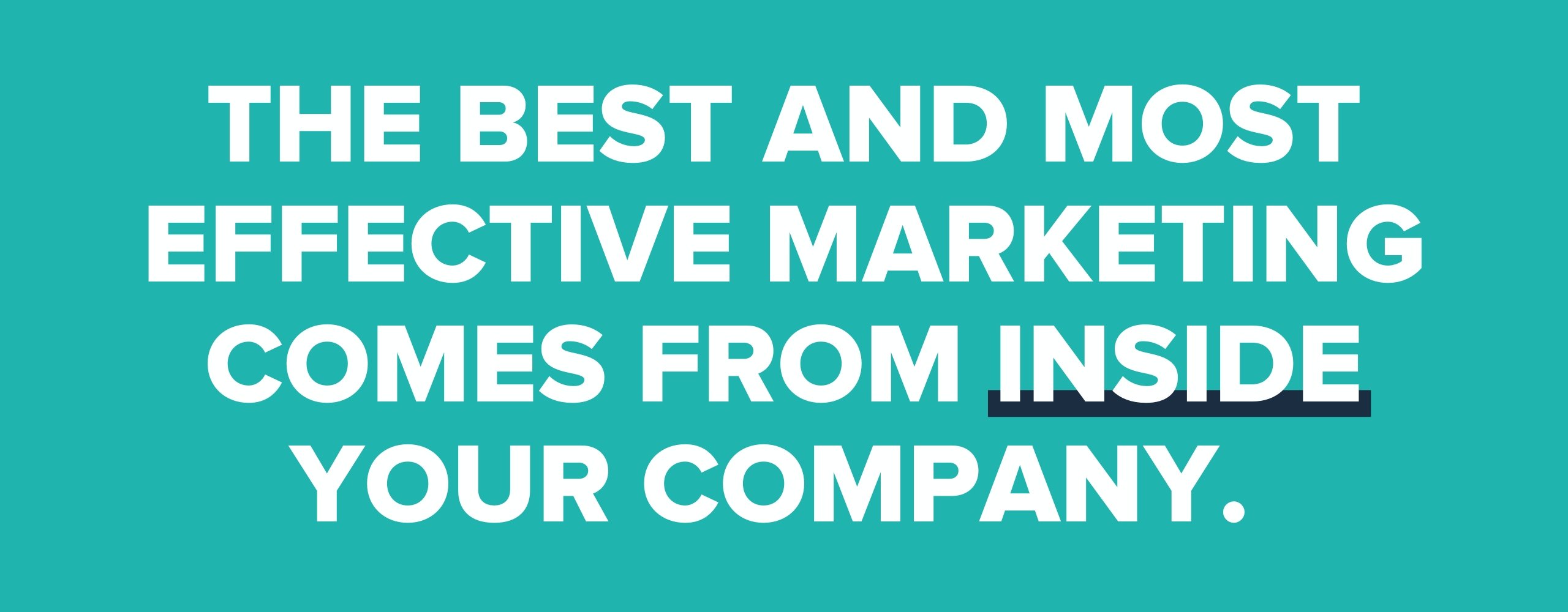
We came to realize that marketing agencies are often not the most effective, efficient, or long-term solution.
The truth is The best and most effective marketing comes from inside your company. It comes from those who know your business best — your employees.
If you’re going to generate the results you're after, you need to be empowered to take control of your own marketing strategy and execution.
To do this, you need a coach.
Content marketing is hard.
Your content represents the soul of your business. And in a content-saturated marketplace, it’s more important than ever to make sure it represents your business’ unique voice accurately and delivers real value.
Modern buyers want to work with businesses they trust and when you deliver value to them through your content — answer their most burning questions thoroughly and honestly — they come to see you as a trusted advisor, out to help, not just make a buck.
Working with an agency makes it incredibly difficult to create content of this caliber.
When you work with a marketing agency (or even freelancers), you run the increased risk of your content or messaging not sounding like you.
It reads as inauthentic, or even worse, inaccurate.
It’s difficult, if not impossible, for an outside business to truly capture who you are as a company. Perhaps they can learn the facts, but capturing your true voice, culture, and the subtle nuances of what it's like to work with you are elusive.
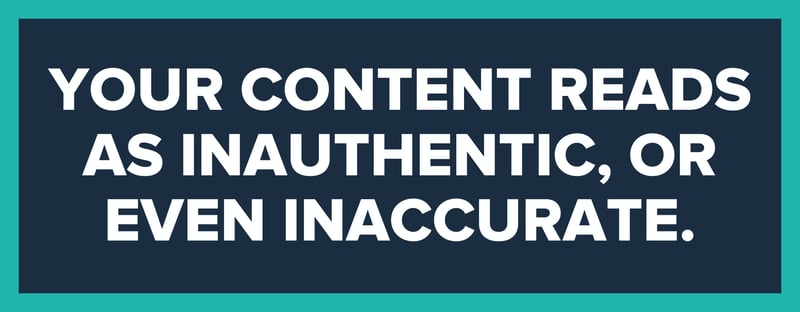
It requires time and focus — two things that often aren't allotted in an agency contract.
When you work with a marketing agency, your time has to be balanced with other clients. You're often limited to the set number of meetings, project hours, or deliverables (i.e. articles or videos) based on your contract.
No extra blogs, no additional videos, no last-minute pivots.
Not to mention, logistically, agencies don’t have as easy access to your subject matter experts or clients/customers.
Insight from these groups is crucial to creating quality content that actually will resonate with your audience, and limited time and access can dramatically affect your finished product and speed.
For a content strategy to be truly effective, we recommend you produce at least three pieces of high-quality and high-intention content per week.
Even if you're using AI, content creation involves a lot of steps: Research, writing, revisions, approvals, and working with your subject matter experts — or even clients/customers.
When working with an agency, the timeline for doing this is limited and there's often a lot of red tape.
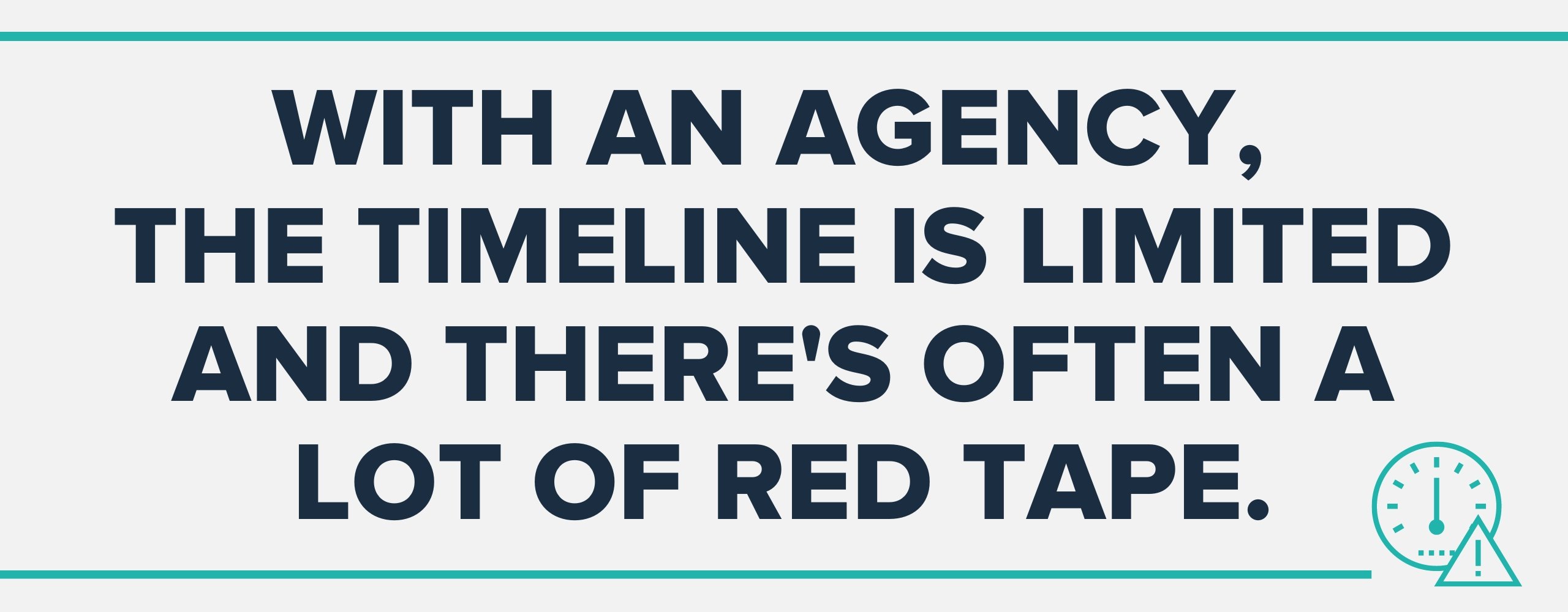
An agency contact won't quickly walk across the hall to ask a question to get a project launched under a deadline. Even a small change may require several emails or hours to get approved.
With so many hoops to jump through, creating content or any marketing material can be a long and arduous process when working with a third-party.
A coach helps you take control of your business' marketing and sales success.
A marketing coach teaches you how to bring your strategy and execution in house so you have more control over your output, timelines, and the results that come from them.
Creating content that speaks to the needs of your customers is one of the most important things you can do — and there’s no better way than by doing it yourself.
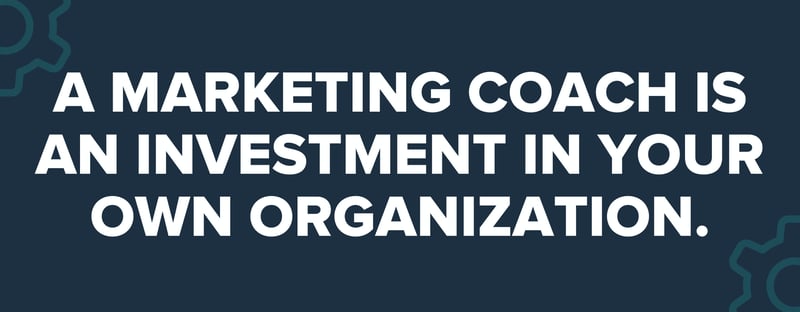
Businesses that are most successful with inbound marketing are the ones that rely on their own subject matter experts, writers, and videographers to get it done.
These businesses don't rely on your agency to nail their voice or capture the intricacies of what they do. They build a team and do it themselves.
It's natural to think hiring a marketing agency will save you time and money, but long term, working with a coach and building a team is much more cost-effective.
Working with a coach helps your business:
Money aside, you'll also reap long-term competitive benefits from working with a marketing coach:
Ready to ditch your agency for a marketing coach? Here's what you should be looking for:
Also, be sure your coach has lots of experience helping companies like yours — leading both marketing and business growth.
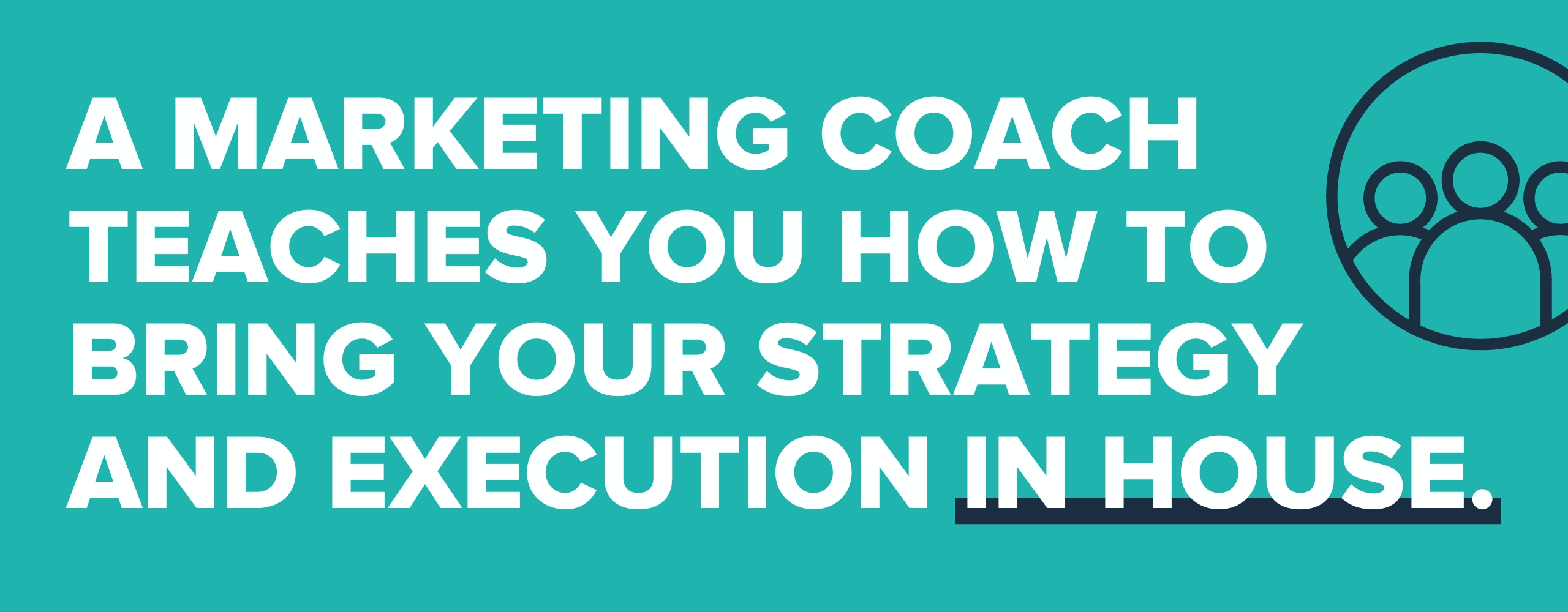
Some coaches might be marketing specialists that don't understand a lot about business. Having a coach that understands all aspects of business is beneficial to working with your teams and ensuring what they do impacts your bottom line.
While it’s tempting to hire a marketing agency to take care of your strategy and messaging, you will rarely get the results you’re looking for unless you bring the most important pieces in-house.
Things like strategy, content creation, and data analytics are all parts of the marketing process your business can’t afford to outsource.
Here at IMPACT, we’ve helped thousands of B2B and B2C companies like yours take charge of your own inbound marketing strategy and make millions in revenue with Marcus Sheridan's They Ask, You Answer.
Our coaches are highly trained in this framework, and will teach your team how to use it to accelerate your inbound marketing success and increase sales.
Want to learn more? Schedule your free coaching call today!
YouTube's seen a rise in content copycats of late.
The tie-up will yield collaborations with over 100 content creators to promote Unilever’s home care brands under the hashtag’s massive following.
Elon Musk is keen to combat spammy replies, which could impact tweet strategies.
Elon Musk is keen to combat spammy replies, which could impact tweet strategies.
The system enables improved text-to-audio translation.
The features are being retired due to lack of usage.
If you purchased a cool URL from Google, it'll soon be under new hosting.
As many of us know, it can be an incredible challenge to create a website with wonderful content that can generate leads and attract qualified traffic, but, once you do, it's extremely gratifying to see all that hard work finally paying off.
Unfortunately, there are many out there who may decide to use that success to their advantage.
We’re not talking “imitation is the highest form of flattery.” I mean they may straight copy your content, design, or worse, your entire site. In fact, shortly after a big homepage redesign, we discovered IMPACT’s site was duplicated, and believe me, it was been a pain to deal with.
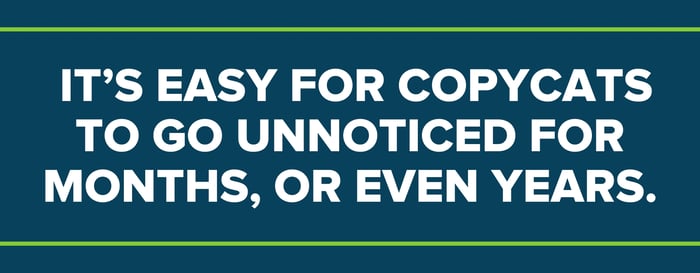
What’s even scarier is it’s easy for copycats to go unnoticed for months, or even years, until one day, someone, be it you or a site visitor, makes the unhappy discovery.
Depending on the severity of copying, you might feel ready to call up your lawyer — but before you jump to that extreme, there are much more affordable (and free) approaches you should attempt.
Below, I’m going to walk you through the steps you need to take to get copycat content taken down and how to react when the easier plans just aren’t going to cut it.
To preface the remainder of this article, I am not a lawyer, nor am I pretending to be one. If you need to seek legal advice over copyright infringement, please contact a lawyer or other legal experts to identify appropriate resources.
With that out of the way, let's dive in.
It’s natural to immediately want to contact the appropriate parties when your site gets copied, but pause for a moment, and be sure to first take screen grabs of the duplicates and if possible, use tools such as Wayback Machine to view the crawled pages at earlier dates.
Also, take screenshots of your own work as proof in case you need to update anything as you go through the next steps.
You’ll likely find that parts of the site that were copied need to be updated, changing the layout or copy. Doing this ensures you aren’t scrambling to revert pages to previous states.
If this is a single page or a few design elements, you can sometimes reach out to the website’s owner and request the page/pages be taken down. There may be a contact form on the website you can utilize — or you can use LinkedIn. Chances are they’ll be willing to work with you.
If not, then you’ll need to do a “WHOIS” look up to see the site’s information contact info.
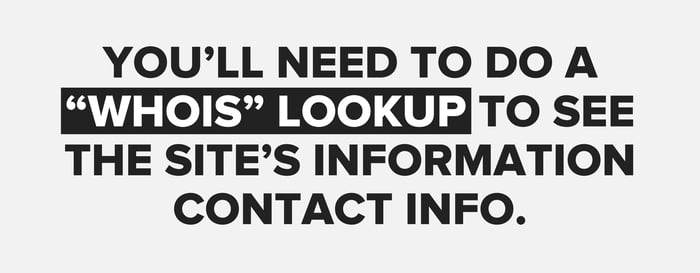
Whenever someone registers a domain for a website, the registrar (the business they bought the domain from) will have them fill out a form of contact information, so this information is accessible in a WHOIS search.
Some WHOIS search sites are:
Once there, type in the URL. For example purposes, we’ll look up IMPACT.
Among the long list of things you receive, you should see ‘registrar abuse contact email’ listed. This would be the best email to contact to request having the stolen content removed.
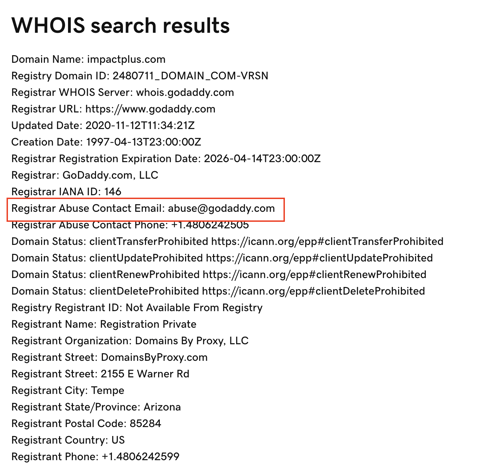
Now, people do have the ability to pay for services that privatize their registration information. Emails ending in @domainsbyproxy.com, or similar proxies are private. They are typically forwarded to a real person, but in some cases, the email leads to a dead end.
In IMPACT’s case, we noticed the copycat site had a phony email address listed (something along the lines of janedoe@gmail.com) which malicious copycatters will do. This meant reaching out to anyone wasn't an option. Womp.
If you find this to be the case for you, or the email recipient simply isn't responding, you’ll need to take it to Plan B.
If you are able to provide sufficient evidence of the copied material and are a representative or can act as one for your organization, you can contact the server host and request the page or site be taken down.
To do so, you first need to identify the server host.
Note, the company who registered the domain is not necessarily the company hosting the site. You need to look under the Network WHOIS information to identify this.
To see this, you can use a site like https://whois.domaintools.com/, which gives you both registrar and network information.
Using IMPACT as our example again, we can scroll down to the Network WHOIS and see more information about the host.
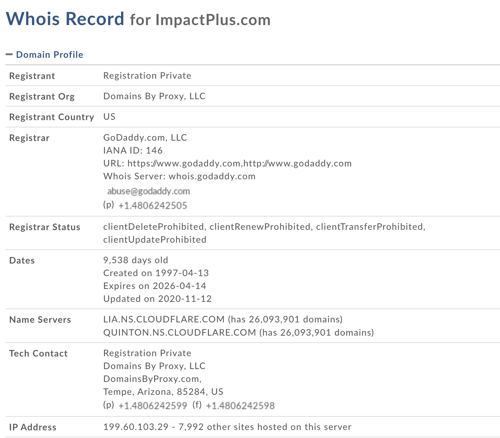
This record will also provide the abuse email and telephone number.
Some hosts, if large enough, will even have abuse forms on their website that you can fill out. If not, contacting them by email is the best course of action since you can provide image evidence too.
I’d suggest only using the phone if you are following up on an abuse ticket and need a status update.
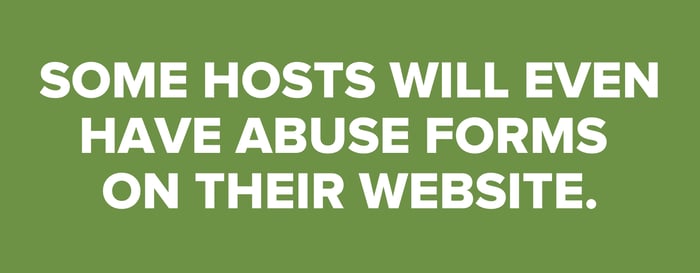
Remember, as annoying as this situation is, make sure you leave your emotions aside when contacting the host. It’s not their fault and they’re trying to help.
Just be direct and specific as to what was copied and the next steps they need to take, and usually, they'll comply.
In rare cases, the host may not respond (unfortunately, this was the case with IMPACT), or, the host may actually be the company who copied your site.
So, now what do you do?
Well, it’s time you upgrade and get the big guys involved.
If you are struggling to get those parties listed above to take down the site, you can move into submitting a Google DMCA request to have the content links removed.
Essentially, the Google DMCA strengthens the legal protection of intellectual property rights in our world of emerging technology. It contains five sections, with Title II outlining “certain legal duties with which Online Service Providers (OSPs) must comply in order to limit their legal liabilities in the event a user of their service violates copyright laws.”
This is where Google comes in.
(Note: Submitting this request is only getting the site removed from Google Search. This does not technically take down the website altogether. You can also submit a Bing DMCA if you have organic traffic from that search engine as well. If you need the website taken down completely, I suggest moving on to Plan D, which we'll cover next.)
When filling out the form, you’ll need to have URL examples of the copyrighted material online. (Use this form that pre-selects fields you'll want to fill out.)

If your entire site was copied, you can use a site crawler, such as https://www.xml-sitemaps.com/, to generate all the links on the duplicated site to be pasted into the copyrighted text field. Then, do a find and replace for the domain on all of those links, and replace it with yours to submit as the originals (this only works if the only change is the domain part of the URL).
After you submit the form, you can monitor the request on your dashboard, which will show the number of URLs submitted and their status.
The links that are in Google search results will show as removed if they violate the DMCA, but if the links have not been indexed, then Google will not be able to take action on them.
In IMPACT's case, we submitted 500 duplicated links, and Google slowly segmented them based on what was actually appearing in the search results.
In the case that you need the site to be taken down entirely, you can issue a DMCA Takedown that can personally remove the site for you. The catch is it costs $199 per site, but, for many, this can be a better price to pay than getting legal experts involved.
Overall, this is the most cost-effective option for businesses looking to get a site removed after other attempts failed.
If all options are a no-go, you may need to pursue legal action. This may be in the form of an official cease-and-desist letter to the offender or to the hosting company.
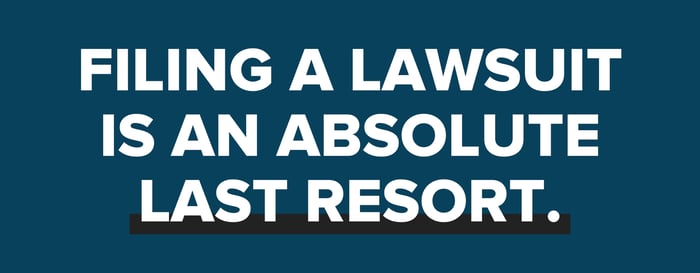
In the event that neither responds, you can then move into filing a lawsuit, but, this is an absolute last resort due to its extreme stress on your time and resources.
If you’re considering this route, make sure the damages you are suing for outweigh the money the lawsuit will cost you. Depending on your circumstances, it may be worthwhile, but for a page or two, it may be better to keep attempting the Google DMCA approach.
If you find yourself in a situation where site duplication is a continuous issue for you, or, you just want the peace of mind that it won't happen, there are a variety of tools to help protect you:
At the end of the day, as long as your content exists online, people can take it, copyright symbol or not. There are even services out there that can duplicate sites for a price, and scary enough, they are easy to find. AI adds a whole other concern as well.
If you're concerned about any aspect of your website's health, you can reach out to the experts at IMPACT who can give you the peace of mind you're looking for.